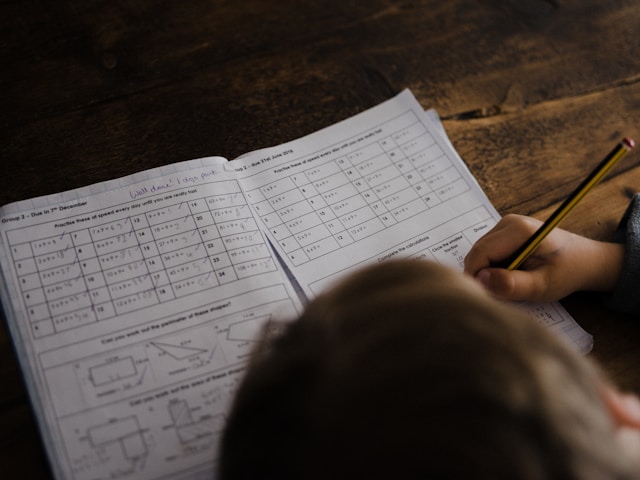10 Creative Ways to Use Technology for Homeschooling Across All Subjects
Explore 10 fun ways to use technology for homeschooling across subjects, using simple tools, hands-on activities, and minimal screen time.
EDUCATION
5/8/20257 min read
10 Tech Activities That Cover Every Homeschool Subject
Homeschooling doesn’t have to feel like traditional schooling moved to a kitchen table. With the right tools and a little creativity, you can bring every subject to life using technology, even if you’re not a tech expert.
Tech and homeschooling don’t also have to mean hours in front of a screen. In fact, some of the best learning happens when kids use tech tools to make a subject more hands-on and fun.
In this post, you’ll find ten creative ways to use technology for homeschooling—each with a fun activity for a different subject you can try right away.
Let’s get started!
1. Math: Run a Digital Grocery Shop
Real-life math becomes easier when kids can apply it to everyday tasks. This one turns spreadsheet software into a mini grocery shop, helping them understand money, prices, and budgets.
What to do:
Open Google Sheets or Excel and list 10–12 grocery items with made-up prices.
Give your child a “budget” (e.g., $30). They will “shop” and track their total.
Add tax, discounts, or “buy one get one free” offers to make it more challenging.
Why it works:
This activity takes math off the worksheet and into real life. Kids get to see how numbers work in everyday decisions: adding totals, calculating discounts, and sticking to a budget. They develop basic money sense and learn spreadsheet fundamentals. Pretending to shop also adds a fun, game-like element that keeps them engaged.
What you’ll learn:
Real-world math skills
Basic spreadsheet functions
Problem-solving with money
2. Science: Track the Weather Like a Scientist
Weather is an easy way to explore data, graphs, and environmental science. There are several mobile and website applications where you can log patterns and create simple reports.
What to do:
Use a free weather app like Weather Underground.
Each day for a week, note temperature, conditions, and wind speed.
Use Google Slides or Canva to create a visual report or bar graph with your findings.
Why it works:
Tracking weather over time introduces children to the core elements of the scientific method to perform an experiment: observation, data collection, and trends. Turning their notes into visuals like graphs or slide decks reinforces how science is communicated and interpreted. It also builds tech skills in apps they’ll likely use again in school projects or presentations.
What you’ll learn:
Observation and data recording
The basics of meteorology
Using tech tools for analysis and presentation
3. English: Go on a Virtual Field Trip and Write a Story
A new setting can inspire creative writing. With virtual tours, you can fulfill your wanderlust and “visit” faraway places from the comfort of your home.
What to do:
Use Google Earth or take a 360° online tour (like the Amalfi Coast or NASA).
Spend 10–15 minutes exploring and taking notes on what you see.
Write a story, diary entry, or travel report based on the experience.
Why it works:
Even reluctant writers often find inspiration when they can actually see the setting.
Virtual tours provide rich, sensory inspiration for writing, even more so for kids who need more than a blank page. Perhaps they’re exploring the pyramids or a space center. Either way, these experiences will broaden their imagination and vocabulary. And when you turn that into a creative story or journal entry, it improves descriptive writing, storytelling, and reflective thinking skills.
What you’ll learn:
Descriptive writing
Using digital exploration to trigger new ideas
Connecting research with storytelling
4. History: Create an Interactive Timeline
Instead of memorizing dates, help your child build a digital timeline of a topic they’re learning. It’s visual, organized, and encourages them to research and summarize the information in their own words.
What to do:
Pick a time period (like Ancient Greece or the Civil Rights Movement).
Use free tools like Preceden or Tiki-Toki to build the timeline.
Add photos, short descriptions, and even YouTube links for each event.
Add voice recordings or short video summaries for a multimedia experience.
Why it works:
Kids use digital timelines to understand sequences and organize complex information visually. This, in turn, helps them remember key events and see cause-effect relationships more clearly. The act of choosing, summarizing, and presenting moments develops research and digital literacy skills. Multimedia elements like videos or audio too, bring the past to life and deepen engagement.
What you’ll learn:
Sequencing and summarizing historical facts
Research and citation basics
Using tech tools for presentation
5. Art: Make a Digital Collage
Kids love combining shapes, photos, and colors. Digital collage tools make it mess-free alongside teaching layout and composition.
What to do:
Use a free platform like Canva or Pixlr.
Choose a theme like "Feelings," "Seasons," or "Space."
Your child can drag, drop, and design a collage with stickers, images, and shapes.
Why it works:
In this activity, kids learn to express themselves and simultaneously build design skills like layout, contrast, and color coordination. It’s also a gentle intro to digital art tools and offers freedom to experiment with absolutely zero worries about making a mess. Choosing images around a theme encourages creative thinking and interpretation and turns a fun task into a meaningful one.
What you’ll learn:
Creative expression using digital media
Basic graphic design
Visual storytelling
6. Preschool: Interactive Story Time with Learning Apps
Younger kids benefit from guided screen time. When combined with reading or hands-on play, tech can support early learning for preschoolers.
What to do:
Download Khan Academy Kids or PBS Kids Games.
Choose a storybook or letter game and play together.
After the screen activity, draw a picture or build something related to the story.
Why it works:
Preschoolers learn best through play and connection. By pairing a trusted learning app with storytelling and hands-on creativity, you’re helping them associate screen time with positive, shared experiences. The supplementary drawing or building task deepens comprehension and helps connect ideas across formats.
What you’ll learn:
Letter recognition, counting, colors
Basic tech interaction
Blending digital learning with offline creativity
7. Blog Exploration: Read and Build from a Kids’ STEM Site
Technology becomes more meaningful when children actively engage with it. This activity encourages them to explore kid-friendly blogs absorb real-world information, and apply what they've learned through hands-on projects.
What to do:
Visit an educational blog like NASA’s Climate Kids or National Geographic Kids.
Choose a DIY project or science fact page to read together.
Follow the steps to create something (e.g., build a paper rocket or recycle tracker).
Why it works:
Using kid-friendly blogs shows children that the internet is a fantastic space to explore and learn. Reading instructions from a real site builds early research habits, while completing a hands-on project kindles a sense of inquiry and follow-through. It also models how tech and DIY can work together for problem-solving and creativity.
What you’ll learn:
Following online instructions
Applying science and engineering ideas
How to use blogs for research
8. PE & Coding: Build a Step Counter with a Micro:bit
This one gets kids up and moving and learning coding basics at the same time. A BBC Micro:bit is a pocket-sized computer that helps introduce block-based programming.
What to do:
Use Microsoft MakeCode to program steps:
On Start → set steps to 0
On Shake → change steps by 1
Forever → show number of steps
Upload to your Micro:bit and attach it to your wrist.
Challenge each other to take the most steps in 10 minutes.
Why it works:
This activity turns exercise into a coding adventure, and is therefore, a great way to link computer science with everyday movement, which can be especially helpful for kids who learn better through physical activity. Apart from this, they not only learn to code but also get immediate feedback through a working gadget. This further reinforces the connection between code and real-world results.
What you’ll learn:
Basics of block programming
Combining physical movement with tech
Real-world use of sensors
9. Geography: Make a Custom Map with Online Pins
Maps become personal when you build your own. This activity transforms geography into a hands-on exploration of places that are close to your heart, be it the countries your family comes from or the landmarks tied to what you're learning. By adding photos, facts, and stories to each pin, kids move beyond memorizing names on a map and start forming real-world connections to the locations they study.
What to do:
Use Google My Maps to create a custom navigation map.
Pin cities, landmarks, or countries and add short facts or photos to each.
Turn it into a family challenge. Ask them: can you name 10 capital cities?
Why it works:
Custom mapping makes geography feel personal and visual. Kids take ownership of their learning when they build something themselves, and using digital tools to label and describe locations turns passive map reading into active exploration. By adding photos, facts, and stories to each pin, kids move past memorizing just names and places on a map and start forming real-world connections to the locations they study.
What you’ll learn:
Navigating and labeling maps
Intro to geography and culture
Research using reliable websites
10. Logic + Tech: Create a DIY Escape Room (Unplugged Computing)
This is a great tech activity and does not require any screens either. It introduces the logic behind algorithms and problem-solving with nothing but paper, boxes, and clues.
What to do:
Hide a small reward in a locked box (or taped shut shoebox).
Create puzzles (riddles, math clues, or pattern challenges) to “unlock” it.
Kids must solve each to reach the final prize.
Why it works:
Problem-solving without screens builds the same logical thinking used in coding. It trains kids to follow sequences, test solutions, and adapt, all of which are essential skills for future programmers. Also, because it’s playful and hands-on, it feels like a game rather than a lesson, but the tech concepts stick.
What you’ll learn:
Logical reasoning and sequencing
How computers “think” through rules
Teamwork and critical thinking
Wrapping Up
Technology isn’t just about screens and software. At its best, it’s a tool that helps kids connect, explore, and create. These 10 activities help kids explore, build, and think in ways that stick across every subject.
From virtual field trips to unplugged algorithm games, each subject can be brought to life in engaging ways — no expensive software, subscriptions, or endless screen time required.
If you’re homeschooling full-time or simply looking to enrich your child’s education, integrating simple technology can spark deeper curiosity and critical thinking across subjects. All it takes is a bit of imagination and a willingness to try something new.
Ask your child which activity they'd like to try first? Help them choose based on their favorite subject. Keep it light, keep it creative, and let your child lead the way.


Explore
Welcome to Stay Curious – the blog where questions never get old and answers are always a little bit unexpected. Here, we challenge the status quo, dig into the weird and wonderful, and offer insights that might just make you think, “Why didn’t I know this sooner?”
From quirky facts to deep dives into the everyday mysteries of life, we’re all about satisfying that itch for knowledge you didn’t even know you had.
So, go ahead—stay curious. We promise it’ll be worth your while. Or, you know, not.
Contribute
Learn
ask.staycurious@gmail.com
© 2025. All rights reserved.
We welcome guest posts on business, tech, travel, finance, lifestyle, career, relocation, and home improvement. Submissions must be original, unpublished (online), at least 800 words, and written in English.
Ready to contribute? Contact us with your ideas!
